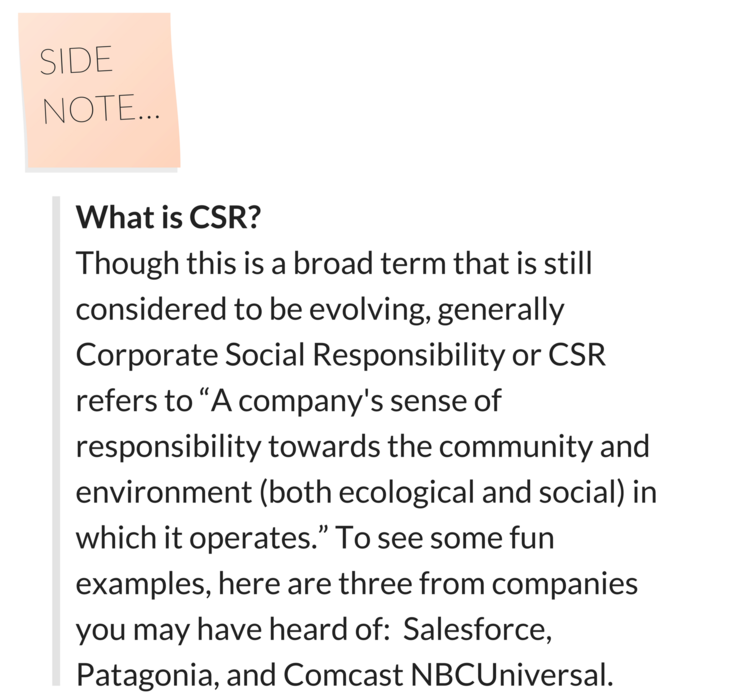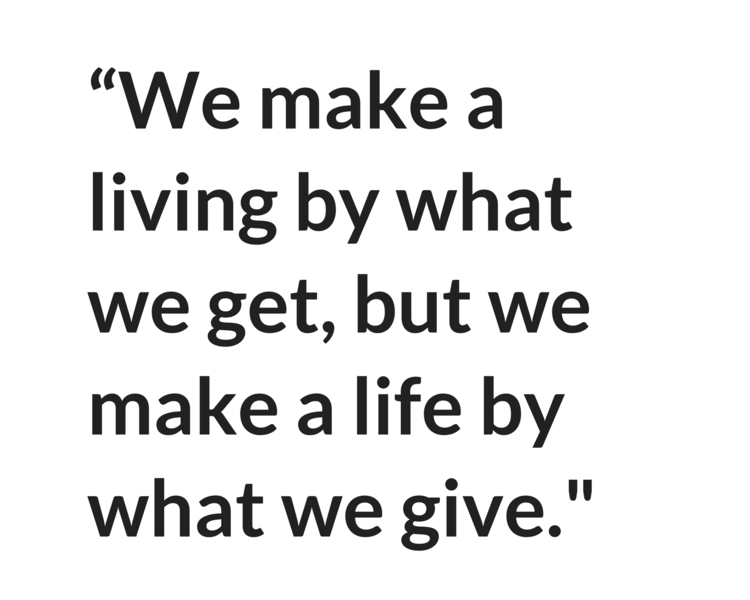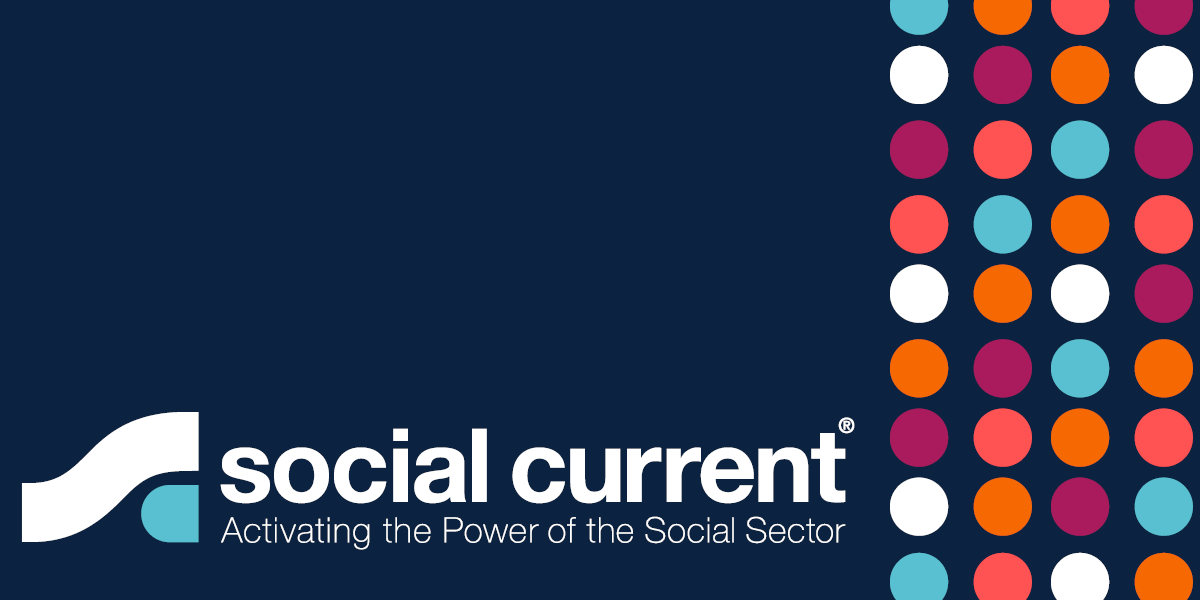Workplace Volunteer Initiatives – Why They Matter in the Social Service Field
The social and human services field might conjure images of social workers seeing clients all day in their offices or case managers out on home visits, and although these are aspects of many jobs in this field, the day-to-day reality is often a bit more varied. Social service organizations include a wide array of roles such as human resource directors, finance managers, quality improvement specialists to name a few. And even for clinicians or those in direct practice a good amount of time is spent completing paperwork and other administrative tasks. While these are critical functions of our organizations, those tasks might not be what first attracted us to the social services field. Often, the pull to work in this field comes out of a desire to “give back” or “do good”. And while all tasks in our organizations help to advance the important missions that we signed on for, some of us may still be looking for more or different ways to give back. Many of us might already volunteer for nonprofit boards, give to charity, or volunteer our skills more directly on our own time. Creating or participating in a volunteer initiative in the workplace might assist with scratching an altruistic itch and benefit our organizations at the same time.

You may have heard of the terms corporate social responsibility or corporate philanthropy and thought they weren’t relevant to your organization. The first instinct might be “Our whole function is to create social impact driven by our mission. We don’t need to/have time for/have the energy for additional volunteer work”. You might be surprised to discover that there are still opportunities and interest at your organization to incorporate the essence of these ideas. Specifically, one way is to create a space for employees to give back through volunteer initiatives. After reading on, I hope you’ll find that there are various ways in which doing so can positively reverberate through your work environment, from boosting morale to encouraging closer work with the community you serve.
What are the benefits?
I think it’s hard to overstate the benefits of creating a space for employee volunteerism. For fun, let’s frame it in the context of some COA standards. After all the standards outline best practice!
Human Resources (HR) and Personnel Development and Training (TS)
Staff satisfaction and retention is an area that challenges many organizations in our field. Creating workplace initiatives that keep staff connected to each other and the organization’s mission is one way to help address this. Employee volunteerism initiatives can be a great benefit or perk to highlight for recruiting purposes and to raise morale for current staff. It might be challenging to increase pay or vacation time, but maybe your organization can consider allowing employees time for volunteer activities.

The opportunity to volunteer as a team, department or organization also serves as an opportunity for team building, or dare I say “bonding”. Getting outside the walls of your office and the routine of your day-to-day can allow you to get to know your co-workers in a new light and increase cross-departmental collaboration and relationships.
It also provides an opportunity to develop and demonstrate skills that you might not otherwise have occasion to use while at work. Participating in something different than typical day to day activities can allow opportunities for a newer or more junior staff member to shine in their leadership skills if given the opportunity. Staff might also have an opportunity to develop skills while volunteering. Maybe you can even consider sponsoring an external volunteer organization to come in to train your staff. Some organizations here in New York City require a one-day training in order to volunteer with them. If staff are able to get that training together and through work, it opens up the opportunity for them to volunteer together or on their own.
Community involvement (GOV / AFM)
Another great benefit of volunteering in your local community is the opportunity for community involvement and creating perhaps unexpected partnerships that raise awareness of your mission and presence in the community. You aren’t doing this for PR, but often increased community connections and awareness of your brand is an added benefit. If you have tee-shirts or hats with your branding, and it feels appropriate, you can ask staff to wear them while volunteering to build name recognition.
An event that takes place outside of normal work hours but can be a great opportunity for staff to come together is participating in a walk or fundraiser. Perhaps your organization sponsors a team for a charity walk and then gets outside together on a weekend to participate. Maybe your nonprofit can even offer to trade with another nonprofit and partner to volunteer for each other one day a year. You never know what unexpected relationships can be born out of volunteerism.
One other outside the box idea is if your organization sponsors conferences or events, can you incorporate an aspect of giving back? Maybe an optional day tagged onto the end of a conference for a volunteer activity?
Performance Quality Improvement (PQI)
Lastly, of course – this is COA – we have to tie it to PQI! One way you might consider looking at creating volunteer opportunities at your organization is to incorporate it into your PQI initiatives. If staff express interest, this absolutely works in relation to any of the areas listed above and tied into goals around staff retention, community awareness, or cross-departmental collaboration, for example.
Show me the data
Speaking of PQI, of course in this day and age, you want your decisions to be supported by stats and data. Well, lucky for you, we’ve got it:
- A 2017 Deloitte Volunteerism Survey of working Americans found that 88% of respondents believed that companies who sponsor volunteer activities offer a better overall working environment than those who do not.
- Research from the University of Georgia, supports the fact that employee volunteering is linked to greater workplace productivity.
- America’s Charities Snapshot 2017, is a great resource for data related to “What U.S. Employees Think About Workplace Giving, Volunteering, and CSR”. Their CEO Jim Star, states “Employers who build programs that connect workers to each other, expose them to corporate leaders, and give them meaningful ways to make a difference in their communities send a strong statement to those workers that they are valued. They also build stronger teams and deeper relationships.”
- COA’s nonscientific staff survey showed similar results: When asked to share what they liked best about COA volunteer opportunities, 88% indicated that it “promotes team-building and builds camaraderie.”
COA – Practice what you preach
Here in lower Manhattan at the COA offices, we think this is one area where we definitely walk the walk. After Hurricane Sandy hit the East Coast and New York City hard in 2012, COA staffers spent a day on Staten Island cleaning out a home affected by the storm. Even for those of us in New York who lived through it, the impact of seeing the devastation to that part of the city was sobering. It also was a wakeup call that we as staff were eager to give back outside of our day to day work, and appreciated the opportunity to get out of the office, roll our sleeves up, and interact with our community. After that event, staff expressed (through our staff suggestion box!) that COA should formalize an employee volunteer initiative. The COA Volunteer Committee was born out of this experience.
To date, thanks to dedicated staff and support from COA leadership, the COA Volunteer Committee has been up and running for over five years. Highlights include reading stories to kids, chaperoning an urban garden project, cleaning up Governors Island, shucking corn for a food bank, lending our hands for a meal delivery organization, donating to coat and backpack drives, and more.
The internal response to these initiatives has been overwhelmingly positive. On staff surveys, we’ve heard feedback like “The volunteer activities promote team-building, a sense of community and positively contribute to staff morale”, “generates collaboration” and, our favorite – it gives “the warm fuzzies”.
Helpful tips
To leave you with some tips from our experience:
- Get buy-in from the top: As with many things, buy-in is key. Leadership endorsing and participating is a key factor in your volunteer efforts success. Lead by example.
- Staff input: Before you make a decision about your volunteer activities, it helps to get a sense of what people are interested in. You might create a simple staff survey to get input and specific suggestions, and then figure out what is the best fit for your audience.
- Variety: If you work for an organization focusing on children, maybe one year you volunteer to plant trees or weed a community garden. If you work in adult substance use, maybe arrange to spend an afternoon reading to kids.
- Risk prevention: You’ll want to consider any risks that may be associated with the planned activity and take steps to mitigate those risks. Setting some simple but clear guidelines for participants is a good way to make sure everyone has clear, shared expectations. A few you might think to include are dress code expectations, time commitment, meeting spots, and communication protocols for off-site, to ensure everyone is on the same page from the start.
- Closing the loop!: A post-activity survey or debriefing to capture what people liked and didn’t like about the activity (or for those who didn’t, what hampered their participation), can give you great insight into what to look for next time.
In the end, only kindness matters
Clearly, there isn’t a one-size-fits-all approach when it comes to volunteer initiatives for social and human service organizations. What works at one organization, might not be a fit at another. However, based on the data, as well as our experience at COA, I encourage you to give some thought and get creative about how this might look for your organization. Maybe start small with just your team or department sponsoring a coat drive this year. Or, some of you may already have robust volunteer initiatives in full swing at your organizations. We’d love to hear about workplace volunteer efforts you may have participated in or put into place at your organization. Please share any questions, thoughts or success stories below!



